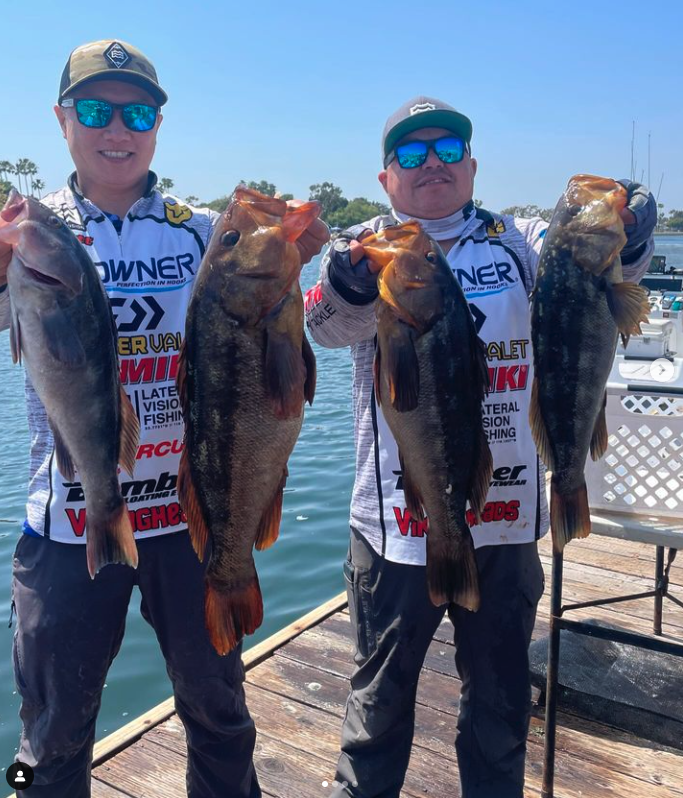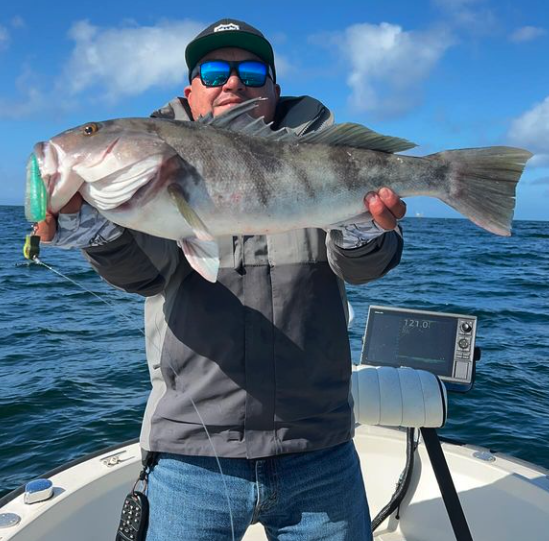BY MIKE STEVENS
SAN CLEMENTE— Forward facing sonar (FFS) has been quite the buzz term over the past couple years, and most of that chatter is coming out of the tournament bass fishing community with nary a peep from the West Coast saltwater scene. That was until Western Outdoor News heard tournament saltwater bass angler Bobby Martinez was testing those waters and reached out to get a read on what he thinks of it all.
‘I starting tinkering with it about six months ago with a buddy, and I wasn’t really sold on it right out of the gate because there is very little info on using them in saltwater out here,” said Martinez. “I just recently put it on my boat, and over the first three or so trips, I got to see some pretty cool stuff.”
Martinez is running a 12-inch Garmin 1242xsv on his Boston Whaler, and as it turns out his interest in the technology was sparked by the waves it’s making (for better or worse) in freshwater.
“I’d been wastching Bassmaster and seeing how that has taken over those tournaments, and I was curious if it would help in saltwater,” he said. “Due to how we have so much baitfish in the ocean, I thought we’re probably going to see meter marks all day that potentially wouldn’t help us, but it’s actually pretty amazing for SoCal saltwater.”
Expanding on the baitfish thing, Martinez told WON in the last Saltwater Bass Series (SBS) tournament that he won (Long Beach), he shot all the way to Marina Del Rey where he’s more confident targeting bass. While locating schools of bait has always been important in catching any gamefish, FFS allowed him to take it a step further.
“I was able to see in real time what the fish (relating to bait schools) were doing in real time,” said Martinez. “I can see the characteristics of the fish and not waste time on any area or structure that does not look productive. I can tell which fish are active and willing to bite, and I am able to stay 50 to 70 feet away from the rocks I am fishing and take a stealthy approach and pick them off. It takes the guesswork out of it. I Can see followers, or I can see when the fish spook and disappear in real time.”
Over the course of the interview, “guesswork” and “real time” were two recurring terms that repeatedly came up. As Martinez was learning the ins and outs of his own system, there were some very cool surprises that surfaced during that process.
“I haven’t figured out how to really see spotted bay bass because they’re usually down tight to the rocks, but I’m able to scan a whole row of pilings and see which ones had bait on them,” he said. “In a night tournament, I pitched on one that had bait and caught one, and as it came up I saw a follower (on FFS) and I told my partner to throw in there and he caught the other one. During that tournament, I just kept scanning around to see which pilings had bait on them and hit those ones without wasting any time.”

Martinez also said he’s able to scan all the way under docked boats to see if anybody is home, and mentioned a time he was fishing in San Diego Bay near a commercial fishing boat with crates of live sheephead hanging in the water. Out of sheer curiosity, he beamed the crates with his FFS an could see the live fish moving in the wooden boxes.
Martinez told WON his plunge into FFS wasn’t free of challenges, but once he powered through it was smooth sailing.
“The main challenge was mounting the unit on a Boston Whaler,” he said. “That was a huge challenge, but everything else is really easy and straight forward. At first, I was scared to jump into it, especially for the price, but it’s super easy once it’s set up. There are good videos for setting up all the parameters of the fish finder.”
He went on to stress the importance of having the right transducer for clarity and detail. Martinez runs a Garmin Livescope Plus LVS34 which, for him, was quite a bit better than the LVS32. He’s also a rockfish guy, and he definitely has plans to see how FFS can help him in that arena.
“I’m going to need a different transducer to shoot deeper for rockfish,” said Martinez. “I haven’t fished too deep with this one, maybe down to 125 feet, so on the shallow stuff under 200, I’m pretty sure I can do a number on them.”
He’s also looking forward to using it for kelp paddy fish this summer, but it’s pretty clear that at this early stage, Bobby Martinez is all in on FFS and fired up to see what else it can do.
“I’ve caught fish that aren’t even on the spot I’m looking at that I would have never caught before,” he said. “Every time I go out it just blows my mind.”



